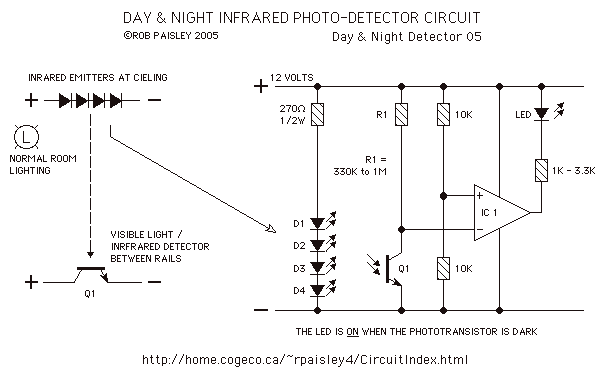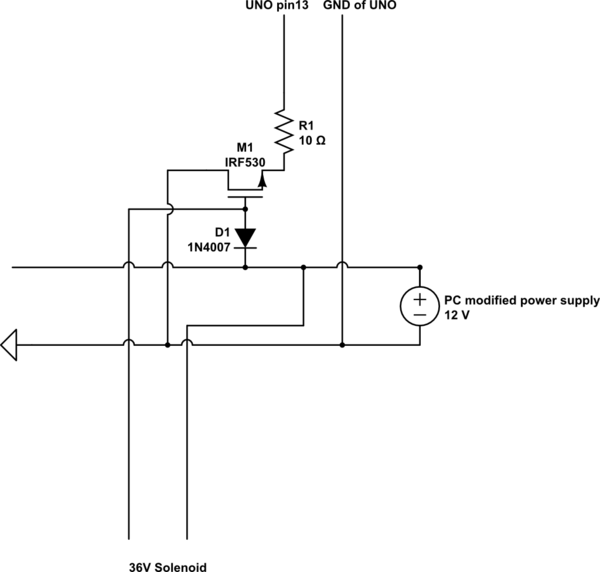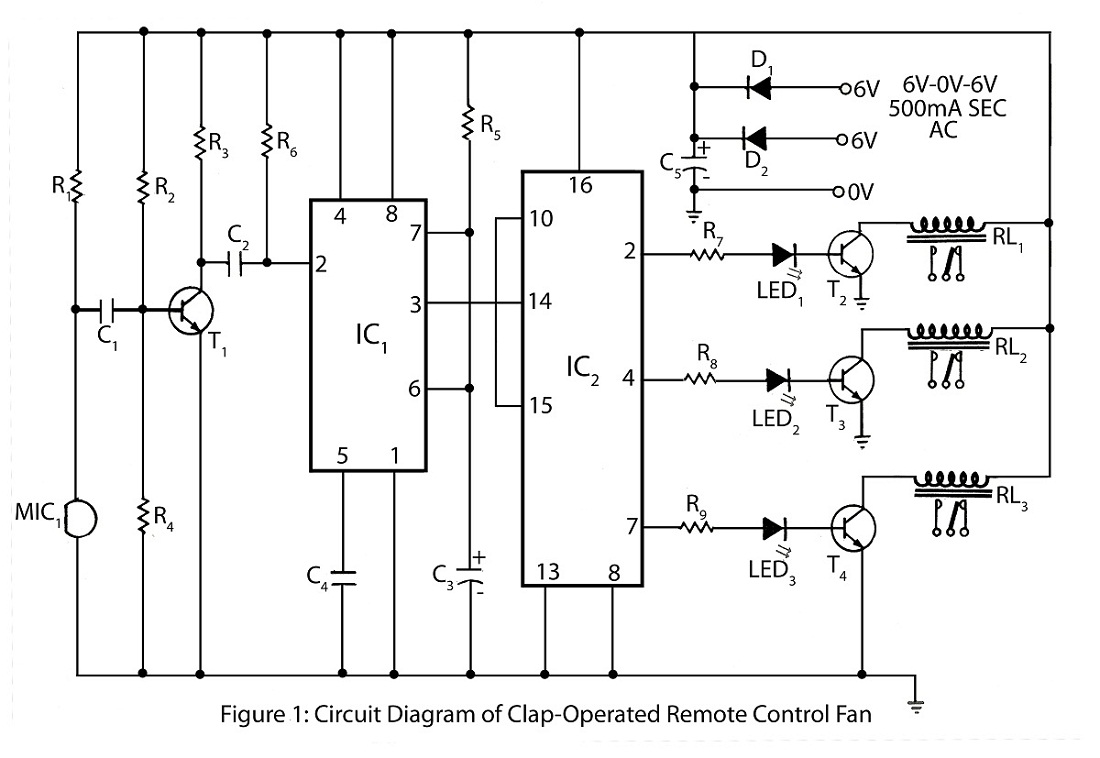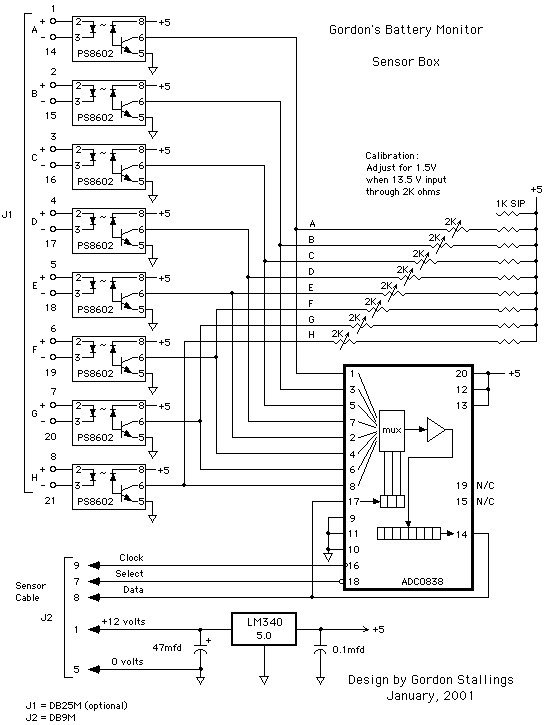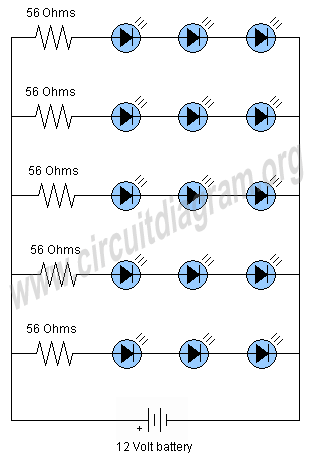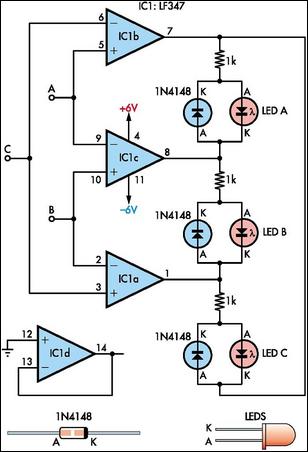
Battery operated mini night lamp
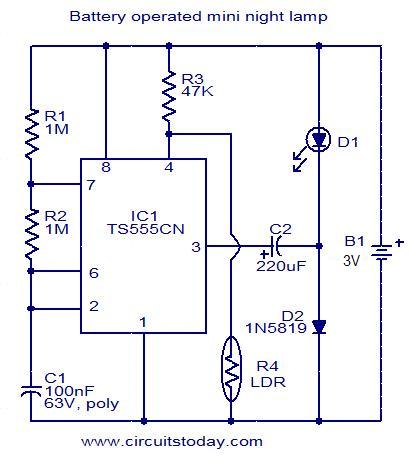
This circuit is designed as a low-power LED night lamp that automatically switches off during daytime. The CMOS timer IC TS555CN is configured as a square wave generator operating at approximately 5 Hz. The output voltage from the IC is increased using a combination of capacitor C2 and diode D2 to drive a bright white LED. During the daytime, the resistance of the light-dependent resistor (LDR) decreases to a few kilo-ohms, preventing the IC from generating oscillations.
The circuit employs a TS555CN timer IC, which is a versatile component often used in various timing applications. In this configuration, the TS555CN operates in astable mode, producing a continuous square wave output. The frequency of oscillation is determined by the resistor and capacitor values connected to the timer. In this case, the frequency is set to around 5 Hz, making it suitable for controlling the LED's blinking pattern.
To enhance the output voltage sufficient to drive the LED, a capacitor (C2) and a diode (D2) are utilized. When the timer generates a high output, capacitor C2 charges, and when the output goes low, the diode D2 allows the capacitor to discharge, effectively doubling the voltage seen by the LED. This arrangement ensures that the LED operates brightly even with a low input voltage from the timer.
The light-dependent resistor (LDR) plays a crucial role in this circuit by detecting ambient light levels. At night, when the light levels are low, the resistance of the LDR is high, allowing the TS555CN to oscillate and turn on the LED. However, during the daytime, the resistance of the LDR drops significantly, inhibiting the timer's oscillations and thus turning off the LED. This automatic switching feature makes the circuit energy-efficient and ideal for use as a night lamp.
Overall, this design demonstrates a practical application of a timer IC combined with an LDR to create an automatic lighting solution that responds to environmental changes.This is the circuit of a low power LED night lamp that will automatically switch OFF at day time. The CMOS timer IC TS555CN is wired as a square wave generator operating at around 5Hz. The output voltage from the IC1 is doubled using the combination of capacitor C2 and diode D2 in order to drive the LED. The LED can be a bright white LED. At day ti me the resistance of LDR drops to few K Ohms and inhibits the IC from producing oscillations. 🔗 External reference
The circuit employs a TS555CN timer IC, which is a versatile component often used in various timing applications. In this configuration, the TS555CN operates in astable mode, producing a continuous square wave output. The frequency of oscillation is determined by the resistor and capacitor values connected to the timer. In this case, the frequency is set to around 5 Hz, making it suitable for controlling the LED's blinking pattern.
To enhance the output voltage sufficient to drive the LED, a capacitor (C2) and a diode (D2) are utilized. When the timer generates a high output, capacitor C2 charges, and when the output goes low, the diode D2 allows the capacitor to discharge, effectively doubling the voltage seen by the LED. This arrangement ensures that the LED operates brightly even with a low input voltage from the timer.
The light-dependent resistor (LDR) plays a crucial role in this circuit by detecting ambient light levels. At night, when the light levels are low, the resistance of the LDR is high, allowing the TS555CN to oscillate and turn on the LED. However, during the daytime, the resistance of the LDR drops significantly, inhibiting the timer's oscillations and thus turning off the LED. This automatic switching feature makes the circuit energy-efficient and ideal for use as a night lamp.
Overall, this design demonstrates a practical application of a timer IC combined with an LDR to create an automatic lighting solution that responds to environmental changes.This is the circuit of a low power LED night lamp that will automatically switch OFF at day time. The CMOS timer IC TS555CN is wired as a square wave generator operating at around 5Hz. The output voltage from the IC1 is doubled using the combination of capacitor C2 and diode D2 in order to drive the LED. The LED can be a bright white LED. At day ti me the resistance of LDR drops to few K Ohms and inhibits the IC from producing oscillations. 🔗 External reference
